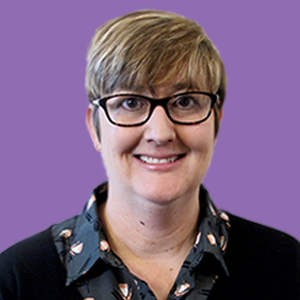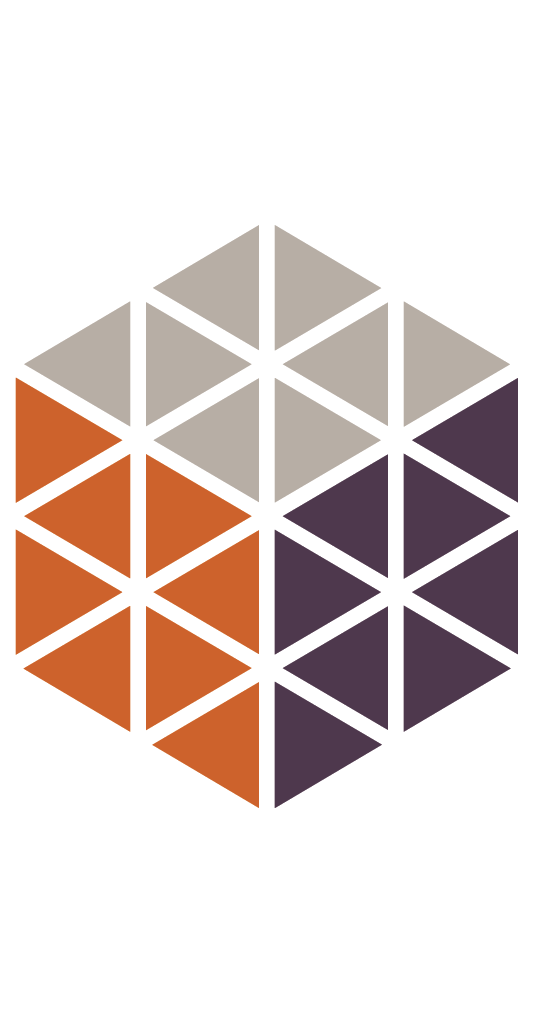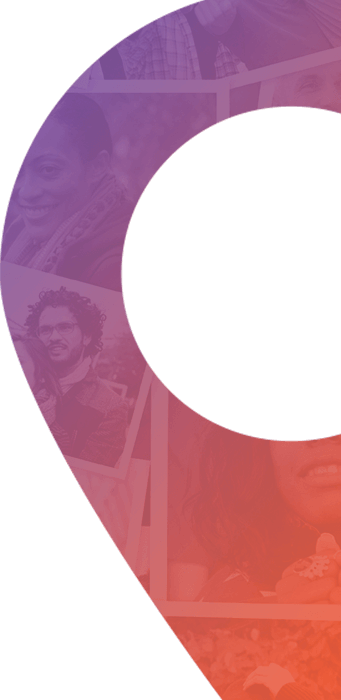When Tara Fitzgerald, a 17-year-old junior from Woodbury, Minnesota, died of a drug overdose in 2014, her family was stunned. A talented musician and honors student, Fitzgerald was the last kid anyone would expect to be using drugs.
But Fitzgerald, it turned out, had been harboring a curiosity about LSD and thought that’s what she was taking the night of Jan. 11. It wasn’t. As an autopsy later showed, Fitzgerald had died from a single dose of a synthetic drug called 25I-NBOMe, a potent chemical concoction with hallucinogenic effects that can also cause cardiac and respiratory arrest, seizures and death.
While the tragic case drew considerable attention to the scourge of synthetic drugs, it also underscored a troubling truth about the nation’s drug epidemic — the ease with which teens can access drugs.
In Fitzgerald’s case, she had purchased the drug from another honors student for just $10. Five teens in her town were eventually implicated in the drug supply chain and charged with murder in her death.
But while Fitzgerald turned to friends for drugs, she could have just as easily purchased them online.
Drugs, as most teens will tell you, are more readily available today than ever before. From friends and family to Facebook and Snapchat, here’s an eye-opening look at some of the common ways teens are accessing drugs and alcohol.
At Home
The easiest place for teens to access drugs and alcohol is within their own home — and it’s not necessarily the liquor cabinet attracting the most attention. It’s the family medicine cabinet. Inside, they’re apt to find a cornucopia of drugs: leftover painkillers from Mom’s knee surgery, Dad’s sleeping pills and stimulants such as Ritalin prescribed for their little brother’s attention-deficit/hyperactivity disorder.
“Kids tend to view prescription drugs as being safe because they were prescribed by a doctor and come in a nice bottle.”
Prescription cough syrup containing promethazine and codeine is another common medicine-cabinet staple associated with teen drug abuse. A popular method of consumption involves mixing the cough medicine with a fruit-flavored soda and dropping in a Jolly Rancher candy for coloring and flavor.
Teens often call this drink “sizzurp,” “purple drank,” “syrup” or “lean.” The dangerous cocktail has become pervasive in rap music and culture.
Dr. Laura Markley, a pediatrics and child psychiatry specialist at Akron Children’s Hospital in Ohio, says kids often have a false sense of security about prescription drugs.
“Kids tend to view it as being safe because it was prescribed by a doctor and comes in a nice bottle,” Markley said. “[They] think it’s not as bad as marijuana or cocaine. And if a doctor says it’s OK, how could it possibly kill me?”
The Partnership for Drug-Free Kids recommends that parents keep all medications in a locked place and perform an annual spring cleaning of their medicine cabinet. It’s important to make note of how many pills and refills are remaining and safely dispose of any unused or expired medications.
Long gone are the days when the only source of drugs was a shady-looking character on a street corner. Social media and the internet have spurred a new generation of digital dealers who are little more than a click away.
Facebook, it seems, isn’t just about connecting with friends. The popular social network has also become a fertile marketplace for the drug trade. While some dealers peddle drugs such as Xanax, LSD, ecstasy and cocaine through secret Facebook groups, others do it more blatantly.
For instance, a quick search of the term oxycodone on Facebook reveals photos of pills and profiles of fake pharmacies offering opioid painkillers, sleeping pills, sedatives and other drugs for sale through the mail without a prescription. Teens are also buying drugs through popular apps, including Snapchat and Instagram, according to media reports.
Online pharmacies
The internet is awash in websites offering potent pharmaceutical drugs without a prescription.
That’s how Jason Surks, a 19-year-old sophomore at Rutgers, University was able to feed his Xanax addiction, according to his mother, Linda. Unfortunately, Surks’ parents didn’t realize that he even had a drug problem until he died in 2003 of an accidental overdose. But a posthumous search of his computer led them to several pharmacies he had visited online, including one based in Mexico.
“We found indications that this pharmacy automatically renewed his order each month,” Linda Surks said during a congressional hearing on prescription drug abuse in 2006. “It was a simple process of a few clicks and the drugs were delivered right to his door.”
While the Food and Drug Administration and U.S. law enforcement agencies have made a concerted effort to crack down on the global network of rogue online pharmacies over the past decade, they’ve barely made a dent. It’s like a game of whack-a-mole with new pharmacies popping up as soon as others are shut down.
The Dark Web
The online drug trade is also flourishing on the dark web, a hidden network of websites that aren’t indexed by normal search engines and are only accessible only through special web browsers such as Tor. In January 2016, alone, drug revenues in cryptomarkets totaled between $12 million and $21.1 million, according to an analysis by RAND Europe. Some tech-savvy teens are finding their way to these illicit markets.
That’s allegedly where two 13-year-olds from Park City, Utah, got their hands on an obscure synthetic opioid known as U-47700, or “pinky.” According to news reports, Grant Seaver and Ryan Ainsworth received the drug from a 15-year-old friend, who had it delivered to his house after purchasing it from China on the dark web using bitcoin, a digital currency. Seaver and Ainsworth died within 48 hours of each other after ingesting the substance in September 2016.
With so many ways for teens to find drugs on the internet, experts recommend that parents keep a close eye on their kids’ internet browsing and social media use. This means checking out your teen’s Twitter and Instagram feeds and familiarizing yourself with hashtags that include slang and street terms for various drugs.
Looking for help?
We have treatment plans specifically catered to teens.
Get Help Now
Drugs in School
In a perfect world, schools would be safe, drug-free zones. Unfortunately, many of America’s high schools have become “supermarkets where students can by drugs.” Researchers at The National Center on Addiction and Substance Abuse at Columbia University reached this conclusion after completing an in-depth survey on teen drug use.
90 percent of American high school students say that some classmates drink, use drugs or smoke during the school day.
According to the 2012 study, nearly 90 percent of American high school students say that some classmates drink, use drugs or smoke during the school day — and 44 percent know of a student who sells drugs at their school. Drugs are so accessible, in fact, that half of the teens surveyed said they believed they could get marijuana, prescription drugs or alcohol within a day if they wanted to.
There’s rarely a day that goes by, it seems, that a student isn’t arrested somewhere in the country for dealing drugs on school property. In October 2017, for instance, a 17-year-old student in Fresno, California, was arrested after allegedly selling Xanax pills to his fellow students that he kept in a Tic Tac container and an Altoids box.
A month later, two students at Central High School in Fort Pierce, Florida, were arrested and charged with allegedly attempting to sell prescription drugs, including oxycodone and a fentanyl patch, to their classmates.
It’s not just a public school problem. In the 2012 study, 54 percent of students at private high schools described their school as being “drug infected,” compared to 61 percent of public high school students.
- 91 percent say marijuana is sold
- 24 percent say prescription drugs are sold
- 11 percent say other drugs are sold
- 9 percent say cocaine is sold
- 7 percent say ecstasy is sold
- 6 percent say cigarettes are sold
- 5 percent say LSD or mushrooms are sold
- 1 percent say alcohol is sold
- 1 percent say methamphetamine is sold
- 1 percent say heroin is sold
Source: 2012 National Survey on Drug Use and Health
At the Store
Prescription and illicit drugs aren’t the only substances teenagers are using to get high. Abuse of over-the-counter medicines, such as cough syrup, is also on the rise.
- Cold medicines containing pseudoephedrine or dextromethorphan
- Diet pills
- Caffeine medicines and energy drinks
- Motion sickness medications such as Dramamine
- Laxatives, herbal diuretics and other herbs
- Allergy medications such as Benadryl and Chlor-Trimeton
While teens are attracted to these medications because they’re cheap, legal and readily available without a prescription, they’re far from safe.
One popular method of abuse, known as “robotripping,” involves ingesting large quantities of over-the-counter cough and cold medicines that contain dextromethorphan, or DXM, including Robitussin and NyQuil.
- Nausea
- Vomiting
- Disorientation
- Diarrhea
- Impaired vision and speech
- Lack of motor coordination
- Increased heart rate and blood pressure
In severe cases, a person can suffer cerebral hemorrhages, seizures, permanent brain damage and even death.
At the end of the day, teens can use numerous methods to get drugs through various avenues. They could use fake IDs, attend parties or meet dealers on the street. Like adults, teens can also access prescriptions by visiting a physician or by rifling through the cabinets of a grandparent, friend or neighbor.
If you suspect that your teen has a drug problem or an addiction, professional intervention may be required. When possible, get your child help before he or she develops a substance use disorder. Addiction treatment can be challenging for children, but rehab facilities for adolescents offer unique programs that prepare teens for success in recovery.
The best steps a parent can take to protect their teen children from drug and alcohol abuse include talking to them about the dangers of addiction and monitoring their activities — both online and off.
Medical Disclaimer: DrugRehab.com aims to improve the quality of life for people struggling with a substance use or mental health disorder with fact-based content about the nature of behavioral health conditions, treatment options and their related outcomes. We publish material that is researched, cited, edited and reviewed by licensed medical professionals. The information we provide is not intended to be a substitute for professional medical advice, diagnosis or treatment. It should not be used in place of the advice of your physician or other qualified healthcare provider.
Author
As a former journalist and a registered nurse, Amy draws on her clinical experience, compassion and storytelling skills to provide insight into the disease of addiction and treatment options. Amy has completed the American Psychiatric Nurses Association’s course on Effective Treatments for Opioid Use Disorder and continuing education on Screening, Brief Intervention and Referral to Treatment (SBIRT). Amy is an advocate for patient- and family-centered care. She previously participated in Moffitt Cancer Center’s patient and family advisory program and was a speaker at the Institute of Patient-and Family-Centered Care’s 2015 national conference.
@DrugRehabAmy
View Sources
- ABC News. (2006, March 15). From Adderall to Xanax, It’s All for Sale Online. Retrieved from http://abcnews.go.com/Nightline/story?id=1730260&page=1
- Bordas, A. (2017, November 24). 2 Buncombe high school students hospitalized after ingesting cold medicine. Retrieved from http://www.citizen-times.com/story/news/local/2017/11/24/two-buncombe-high-school-students-hospitalized-after-ingesting-cold-medicine/871587001/
- Calix, B. (2017, October 23). Sanger teen arrested for selling Xanax at high school. Retrieved from http://www.fresnobee.com/news/local/article180497996.html
- CBS News. (2014, May 28). 5 charged in 17-year-old Minn. Girl’s drug overdose death. Retrieved from https://www.cbsnews.com/news/5-charged-in-17-year-old-minnesota-girls-drug-overdose-death/
- Cincinnati Children’s Hospital. (2014, February 5). Sizzurp: A Dangerous Teen Drink. Retrieved from http://blog.cincinnatichildrens.org/safety-and-prevention/sizzurp-a-dangerous-teenage-drink/
- ConsumerMedSafety.org. (2014, February 5). Top Ten OTC medicines and herbals abused by teens and young adults. Retrieved from http://www.consumermedsafety.org/otc-drug-abuse/top-ten-otc-medicines-and-herbals-abused-by-teens-and-young-adults
- DEA.gov. (2013, November). 25I-NBOMe, 25C-NBOMe, and 25B-NBOMe. Retrieved from https://www.deadiversion.usdoj.gov/drug_chem_info/nbome.pdf
- DEA.gov. (2014, March). Dextromethorphan. Retrieved from https://www.deadiversion.usdoj.gov/drug_chem_info/dextro_m.pdf
- DEA.gov. (2005, April 20). International Internet Drug Ring Shattered. Retrieved from https://www.dea.gov/pubs/pressrel/pr042005.html
- DEA.gov. (2012, August). Prescriptions for Disaster: How Teens Abuse Medicine. Retrieved from https://www.dea.gov/pr/multimedia-library/publications/prescription_for_disaster_english.pdf
- Fink, J. (2001, May 19). How Easy Is It For Teens To Get Drugs? Retrieved from http://dfw.cbslocal.com/2011/05/19/how-easy-is-it-for-teens-to-get-drugs/
- Festinger, D. et al. (2016, May 26). Use of the Internet to Obtain Drugs without a Prescription Among Treatment-involved Adolescents and Young Adults. Retrieved from https://www.ncbi.nlm.nih.gov/pmc/articles/PMC5303004/
- Friese, B. et al. (2014, November 24). How Parents of Teens Store and Monitor Prescription Drugs in the Home. Retrieved from https://www.ncbi.nlm.nih.gov/pmc/articles/PMC4242095/
- Guarino, B (2016, November 4). Synthetic opioid nicknamed ‘pink’ blamed for deaths of two 13-year-old Utah boys. Retrieved from https://www.washingtonpost.com/news/morning-mix/wp/2016/11/04/synthetic-opioid-nicknamed-pink-blamed-for-deaths-of-two-13-year-old-utah-boys/
- Garvin, K. (2006, July 26). Mothers Plead for Prescription Drug Legislation. Retrieved from http://abcnews.go.com/Health/story?id=2239635&page=1
- Higgins, K. (2017, December 8). Parent says he discovered teens using Snapchat to buy, sell drugs. Retrieved from http://www.wftv.com/news/trending-now/parent-says-he-discovered-teens-using-snapchat-to-buy-sell-drugs/660759903
- Hone-McMahan, K. (2009, December 3). When Kids Raid the Medicine Cabinet. Retrieved from http://www.chicagotribune.com/sns-health-kids-raiding-medicine-cabinet-story.html
- Mohrmann, J. (2013, November 6). Teens getting drugs through Instagram: Parents need to monitor hashtags, look at child’s search-history. Retrieved from https://www.news4jax.com/news/local/teens-getting-drugs-through-instagram
- National Institute on Drug Abuse for Teens. (2017, March). Prescription Drugs. Retrieved from https://teens.drugabuse.gov/drug-facts/prescription-drugs
- National Institute on Drug Abuse for Teens. (2017, May). Cough and Cold Medicine (DXM and Codeine Syrup). Retrieved from https://teens.drugabuse.gov/drug-facts/cough-and-cold-medicine-dxm-and-codeine-syrup
- Partnership for Drug-Free Kids. (2017, March 27). Spring Clean Your Medicine Cabinet. Retrieved from https://drugfree.org/parent-blog/spring-clean-medicine-cabinet/
- Popper, N. (2017, June 10). Opioid Dealers Embrace the Dark Web to Send Deadly Drugs by Mail. Retrieved from https://www.nytimes.com/2017/06/10/business/dealbook/opioid-dark-web-drug-overdose.html
- RAND Corporation. (2016, August 8). Untangling the ‘Dark Web’: New Study Shows Steady Growth of the Online Illicit Drugs Trade. Retrieved from https://www.rand.org/news/press/2016/08/08.html
- Sallinger, R. (2018, December 1). Facebook Used As Platform For Sale of Drugs. Retrieved from http://denver.cbslocal.com/2017/12/01/drugs-sold-on-facebook/
- Saltzman, W. (2015, February 19). Investigation: Teens getting high on easy-to-get drugs. Retrieved from http://6abc.com/health/investigation-teens-getting-high-on-easy-to-get-drugs/525260/
- Snyderman, N. (2006, October 12). Teens turn to Internet for prescription drugs. Retrieved from http://www.nbcnews.com/id/15240265/ns/nbc_nightly_news_with_brian_williams/t/teens-turn-internet-prescription-drugs/#.WjBSnkqnG70
- The National Center on Addiction and Substance Abuse at Columbia University. (2012, August). National Survey on American Attitudes on Substance Abuse XVII: Teens. Retrieved from https://www.centeronaddiction.org/addiction-research/reports/national-survey-american-attitudes-substance-abuse-teens-2012
- The National Center on Addiction and Substance Abuse. (2004, February 26). “You’ve Got Drugs!” Prescription Drug Pushers on the Internet: Dangerous, Addictive Prescription Drugs Widely Available to Children on the Internet. Retrieved from https://www.centeronaddiction.org/newsroom/press-releases/2004-youve-got-drugs-prescriptions-drug-pushers-on-internet
- Whigham II, J. (2017, November 17). New: Teens accused of selling oxycodone, fentanyl at St. Lucie school. Retrieved from http://www.palmbeachpost.com/news/crime--law/new-teens-accused-selling-oxycodone-fentanyl-lucie-school/YA0DFenCQXKtoI5gygbDLK/
 Addiction
Addiction
 Treatment
Treatment
 Faith & Religion
Faith & Religion
 Active Recovery
Active Recovery
 Our Community
Our Community




